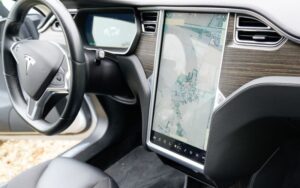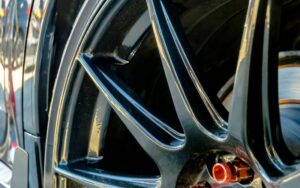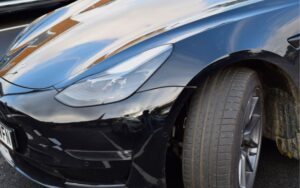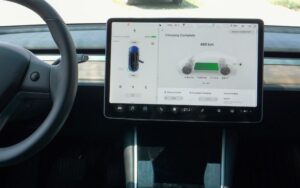Tesla Regenerative Braking Temporarily Reduced!
All cars, including Teslas, will give off warning prompts occasionally once there is a deviation from normal functioning.
These prompts can pop up at any time – while you are driving, while the car is charging, or parked.
Typically, most of these prompts can get you bothered and concerned, especially if you are a new owner.
It is even worse when it pops up while you are driving – which is what happens with this prompt.
The “Regenerative Braking Temporarily Reduced” prompt usually concerns your battery charge and capacity. There are some other variations to this message depending on your Tesla model. This message is standard and will rectify itself after some time without you taking it in for repairs. This prompt will eventually disappear as you continue to drive.
This article will explore what this prompt means, its causes, its possible effects on your Tesla battery, and how you can adjust the regenerative braking system.
What Does It Mean When Your Tesla Shows “Regenerative Braking Temporarily Reduced”?
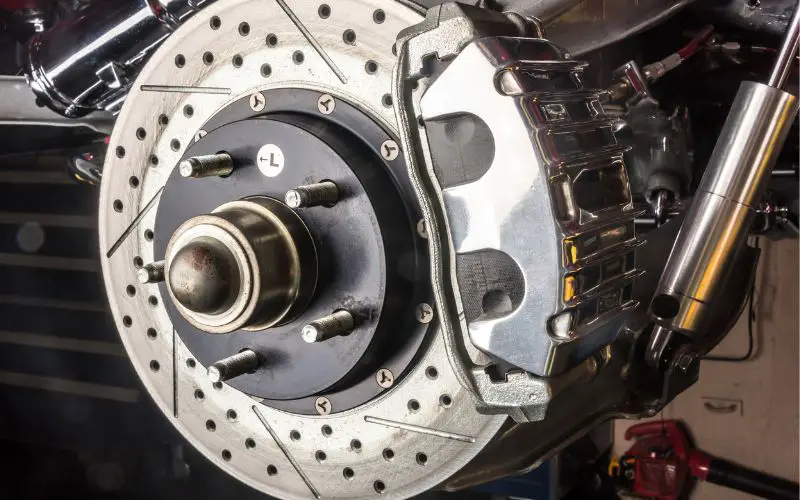
The “Regenerative Braking Temporarily Reduced” indicates that the automatic braking capacity is not functioning at usual efficiency.
This means it will take longer for the car to slow down or even stop altogether.
Tesla has two distinct braking systems – hydraulic and regenerative braking systems.
In comparison, the hydraulic system utilizes the brake pads on the wheels and is electrically controlled by the computer.
On the other hand, the regenerative braking system uses the drive motors and causes the car to decelerate using electricity to charge the battery.
This way, any energy that would have been lost due to braking is converted to electrical energy to boost the battery capacity.
Several variations of this message include “Regenerative Braking Features Temporarily Limited” and “Limited Deceleration When Accelerator is Released.”
This prompt is your car’s mode of warning you not to depend on it for automatic deceleration, and you will have to step on the brake a bit more frequently than before.
This problem is usually not permanent and will revert to normal as you continue to drive.
What Causes the Temporal Reduction of Tesla’s Regenerative Braking?
The temporal reduction of Tesla’s Regenerative Braking happens for about three reasons. The primary reason is when your battery is fully charged.
Other reasons include your battery being cold or if the existing current in the battery is too much.
#1. Fully Charge Battery
One of the primary challenges electric car owners encounter is fully charging their cars.
Even with advanced technology and strategic charging spots, it takes a while for these cars to charge and run correctly, especially when the batteries are low.
To avoid this problem, it is common practice to leave your car charging overnight.
While this will give you the much-desired full battery capacity, it will also affect your car’s regenerative braking system.
Since your battery is fully charged and does not need the extra charge it would have gotten from regenerative braking.
#2. Cold Battery
Cold batteries are a common phenomenon in the winter. The mechanism behind this phenomenon is that it becomes harder to charge the battery in weather like this.
The electrolyte in your Tesla Lithium-ion battery turns dense during this weather. At this point, it becomes more difficult for the ions to flow from one electrode to another.
Given that this flow is mandatory for efficient battery charge, it is difficult when the environmental temperature drops.
The maximum temperature that supports optimal charging in Tesla cars is about 32℉.
Once the temperature drops below 68℉, you will get the “Regenerative Braking Temporarily Reduced” prompt.
#3. Battery Overcharged
If your battery gets too much charge at a time, it will set off the “Regenerative Braking Temporarily Reduced” prompt.
One common activity that can cause this overcharge is if you accelerate at high speed and immediately decelerate to a stop.
When you accelerate rapidly, the car intensively converts kinetic energy to electricity, charging the battery. This swift energy conversion at high speeds could overload the system.
Your car, in response, would turn off the regenerative braking system to avoid that overload, engaging the manual hydraulic braking system.
In the three cases, the best solution is to keep on driving and allow the battery to reduce gradually. Alternatively, you can avoid charging your battery fully and stop between 90% and 95%.
Does Tesla’s Regenerative Braking Affect Battery Life?
The “Regenerative Braking Temporarily Reduced” prompt is a protective strategy. Tesla turns off this system to ensure that your car battery is not subject to deteriorating conditions.
If you live in a region prone to cold temperatures or sudden temperature drops, it is possible to misinterpret the frequency of the message as a sign of battery degradation.
However, this is only the vehicle’s way of optimizing battery health. What is more disadvantageous to your car is the cold weather itself.
Still, this exposure is better than exposure to high temperatures or deep charge-discharge cycles.
Other factors that affect the battery life of Tesla vehicles are:
#1. Charge Cycles
A charge cycle refers to the time it takes for your battery to get to 100% and run down again. Over time, your battery will naturally degrade with the number of cycles.
It is essential to know that Tesla batteries can withstand many charge cycles while retaining a significant percentage of their original capacity.
#2. Deep Discharges
Like most electronic devices, if you keep using your cars to low battery states before recharging, this practice can cause battery deterioration.
It is typically better for lithium-ion batteries if you maintain an average charge level rather than allowing your car to drop to low levels frequently.
#3. Fast Charging
One of the preferred ways to charge a Tesla vehicle is using a Tesla Supercharger.
Although these superchargers are safe for the battery’s health, frequent and consistent reliance on Supercharging (or other fast charging methods) can put more stress on the battery.
Therefore, it is better to use slower charging methods, like Level 2 charging more often than superchargers, to protect your battery.
#4. Battery Age
Over time, your car battery is bound to deteriorate, even if you do not drive it around often and try to follow other battery care practices.
In this case, the critical difference is that this natural deterioration will occur slower than when you do not take care of your car and battery.
#5. Driving Habits
It is common practice to want to drive at high speeds, especially when you are on a free road.
However, constant aggressive driving puts more strain on your battery due to higher power demands.
Despite these factors, Tesla batteries are very durable and can retain high-capacity percentages even after running hundreds of thousands of miles.
This fact does not undermine the need to take adequate care of your car by maintaining healthy driving and charging practices.
Can You Adjust Tesla’s Regenerative Braking?
Most Tesla cars allow you to adjust the regenerative braking system in your car through the touchscreen interface.
The exact directions for this adjustment may vary from one model to another. So, it is best practice to read through the owner’s manual for your model.
For example, if you drive the 2012-2022 Model S, adjusting the regenerative braking in your car takes three straightforward steps.
- Select Pedals & Steering under the Controls Menu.
- Click on Regenerative Braking.
- Choose between the Standard or Low levels of the braking system.
#1. Standard Level
This setting maximizes the energy returned to the battery during deceleration. So, when you release the accelerator pedal, your car will slow down with much force.
This action prompts the electric motor to act as a generator and convert the energy from kinetic to electrical, storing it in the battery., storing it in the battery.
Most drivers prefer this option because it enables the one-pedal driving feature. This feature allows you to enjoy your ride using only the accelerator pedal.
With this feature, you only need to step on the brake pedal in an emergency.
#2. Low Level
The low level focuses on reducing the regenerative braking effect.
This reduction makes you feel like you are driving with a conventional internal combustion engine anytime you take your foot off the accelerator.
One difference between the Standard and Low settings is that the low setting will enable your car to coast more. Additionally, your car recaptures more energy in the Standard setting.
Below is a table showing the key differences between these settings:
| Standard Level | Low Level |
|---|---|
| The regenerative effect is maximized. | The regenerative effect is minimized. |
| More energy returns to the battery. | Less energy returns to the battery. |
| Aggressive deceleration | Gradual deceleration |
| Allows One-pedal driving. | More reliance on brake pedal. |
| More efficient due to energy recapture. | Less efficient due to less energy recapture. |
Despite these differences, it is important to note that the battery temperature plays a key role in the efficiency of either setting.

Hey, I’m Michael Davis, a 35-year-old with a degree and a love for cars and tech. Since I was a kid, cars have been my thing—so much that I even thought they ran on magic beans! Fast forward, and I’ve built Vehicle Army, your one-stop-shop for easy-to-understand car facts.

